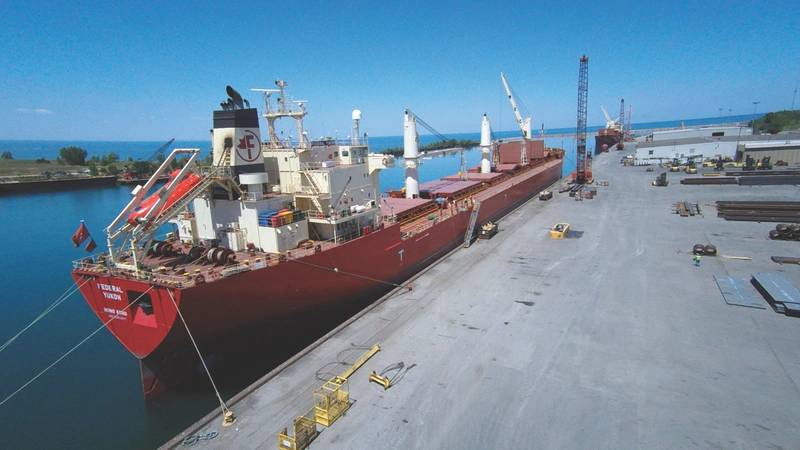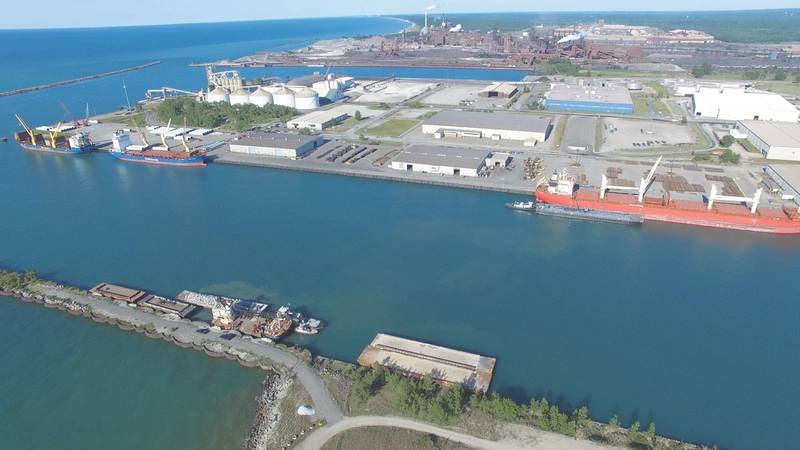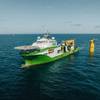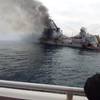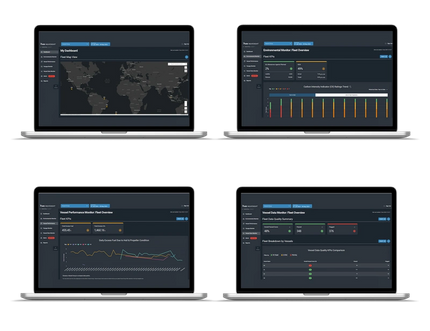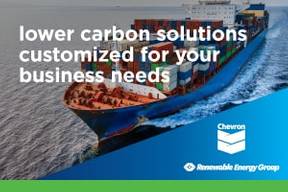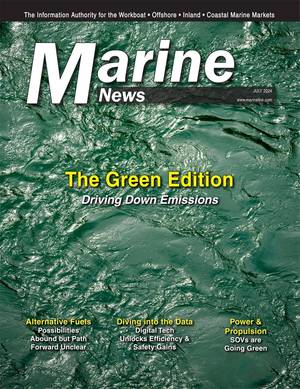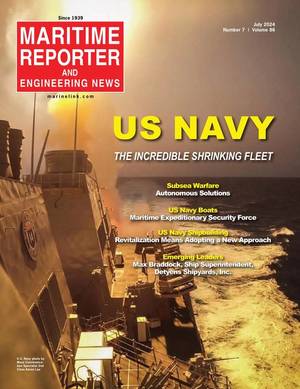The Ports of Indiana is a statewide port authority, established in 1963, which operates three ports: two on the Ohio River, one on Lake Michigan. Port officials refer to the three as “America’s Premier Inland Port System.” They cite location, location, location, providing access via two critical freight arteries – the Great Lakes and the Inland Waterway System and proximity to the world’s most productive industrial and agricultural regions.
Three for the Money
The Ports is the only statewide port authority in the Midwest. It can develop projects anywhere in Indiana (a possible fourth port is under review, on the Ohio River in Lawrenceburg, about 30 miles west of Cincinnati). The Ports does not receive any local or state tax dollars; 100 percent of port revenue is reinvested in port facilities. Revenue is generated by facility leases and user fees based on shipments through the ports. State economic officials estimate the three ports contribute over $6 billion annually to Indiana’s economy, supporting 50,000 jobs.
Burns Harbor resides on Lake Michigan, 18 miles from Chicago, in the “Steel Capital of North America.” This port supports Great Lakes bulk carriers up to 1,000 feet and ocean vessels capable of transiting Great Lakes/St. Lawrence Seaway locks. U.S. Army Corps of Engineers (USACE) Waterborne Commerce Statistics for 2015 showed the port handling an impressive 7,969,513 tons.
Jeffersonville is on the Ohio River, part of the Louisville, Ky., metro area. Encompassing 1,057 acres, the riverfront spans 3,200 feet. Major cargoes include corn, fertilizer, salt, wire rod, soybeans, steel, liquid asphalt, pig iron and heavy lift. Infrastructure includes docks, rail, utilities, multimodal connections, specialized cargo handling services and expansive storage facilities. It is also home to the largest U.S. inland shipyard operation – Jeffboat. The USACE put Jeffersonville’s 2015 cargo tonnage at 2,800,000.
Mt. Vernon is one of the country’s largest inland ports, spread out over 1,200 acres with 8,000 feet of riverfront. Sitting just 153 miles from the Ohio/Mississippi confluence, facilities include a 60-ton dual-lift overhead crane fully integrated to transload between barge, rail and truck, public piers equipped for transloading bulk products and heavy lift cargo and a coal terminal with 8 million tons of annual capacity. Importantly, the Port has eight miles of interior rail track provides links to five Class I railroads. It’s no surprise, then, that 6,140,964 tons of cargo rolled through this inland hub 2015.
But, Indiana has other big ports, too. Indiana Harbor, in East Chicago, Ind., for example, is the second ranking harbor in volume among the 55 Great Lakes Federal commercial harbors, according to World Port Source. Indiana Harbor handled 12,354,161 tons in 2015, according to ACE. Just eight nautical miles west of Burns Harbor sits the port of Gary. Gary handled 8,669,252 tons in 2015. All that said; Indiana Harbor and Gary are not part of the Ports of Indiana system.
(Planned) Growth
In 2017, the three Ports of Indiana handled 11.8 million tons of cargo shipments, the second highest total in the Port’s history. Coal, steel, fertilizer, ethanol and project cargo were key items. The 2017 numbers are an increase of 5 percent over the previous year and 9 percent over the previous 5-year average. The current 5-year average is up 50 percent vs. the previous 5-year average:
- Average tons/year 2013-2017: 10.8 million tons.
- Average tons/year 2008-2012: 7.3 million tons.
Port officials are optimistic that they can keep these numbers trending in the right direction. Jody Peacock, Vice President, told Marine News that his team projects continued growth as shipping volumes are closely tied to the Port’s important regional market sectors – agriculture, domestic manufacturing in steel related industries and coal, shipped domestically and internationally for power generation.
Steel gets an especially important focus, particularly at Jeffersonville, with its “steel campus” – 15 steel-related companies serving Midwest auto and appliance industries. In 2015 and 2016, Jeffersonville handled its two highest annual volumes of steel. Last September, this mix of expertise, assets and hard work paid off big. The South Korean steel firm POSCO, the fifth largest steel maker in the world, opened a new $21 million plant, the first phase of a project announced in April 2016. This is POSCO’s only U.S. facility outside of California. The plant will process steel wire for the auto industry and it will serve as a company distribution center.
“Our Jeffersonville port’s location in the heart of the auto and appliance manufacturing region will be a tremendous strategic advantage for POSCO,” said Rich Cooper, Ports of Indiana CEO. “The company will now have year-round access to the Gulf of Mexico and multimodal options including water, access to multiple Class I railroads and interstate highways,” Cooper said.
It’s important to note that the Indiana Economic Development Corporation did offer POSCO up to $550,000 in conditional tax credits and up to $50,000 in training grants based on the company’s job creation plans. These incentives are performance-based. The company can claim the incentives as Indiana residents are hired.
Rich Cooper and his team have an active development program for each Port. Major activities are overseen by the Ports of Indiana Commission, a seven-member, bipartisan board appointed by the Governor. Commissioners serve staggered, four-year terms; they approve the Port’s major projects, budgets and strategic objectives.
Indiana Governor Eric Holcomb appointed two new Commissioners last October. Monica Newhouse-Rodriguez is managing principal of a national airport consulting firm which provides airport planning, capital management and development services. Michael Browning is chairman of the board for Browning Investments, the largest developer of industrial distribution facilities in central Indiana. This team knows freight, transport and logistics.
Funding the Future
One of the most recent, and high profile, developments that will advance critical infrastructure occurred last October when Burns Harbor was awarded a $9.85 million DOT FASTLANE small projects grant, money to complete an extensive series of projects with a total cost of $19.7 million. Projects include a new shipping berth and truck marshalling yard and a new 2.3-acre multimodal cargo terminal for transfers between ships, barges, rail cars and trucks. Dock improvements will yield an additional 1,200 feet of dock space.
The rail improvements are noteworthy. Over four miles of lines will be added to the Port’s 14-mile network. Switching capabilities will be added within the port. Two new rail yards will create storage for 165 railcars and accommodate a 90-car unit train. Currently, Burns Harbor mainline connections are “challenging,” according to Indiana DOT. The Port wants better connectivity with Norfolk Southern’s mainline, running from northern Ohio to Chicago.
These plans are timely. Consider that in 1995, 40 percent of grain tonnage was carried in trainload quantities (50+ carloads), compared to 68 percent in 2014.
In 2018, Burns Harbor expansion moves into the design phase. Construction is expected in 2019. Completion will be “over the next few years,” officials say. This Burns Harbor project is additionally noteworthy because the Jeffersonville Port received a similar DOT grant in 2015. That grant was for $10 million and, again, for multimodal infrastructure – unit train delivery to and from the port, reconfiguring waterfront rail infrastructure to increase operational efficiency and a new intermodal facility. Jeffersonville port officials expect these developments to more than double the capacity of rail to barge transfers. Jeffersonville construction starts this year. Last summer, for example, the Port released a notice seeking qualified bidders for a $5 million bulk terminal project, which also includes 2280 linear feet of railroad track. Construction is to be finished this year.
Port officials did not say how they are financing the balance of these projects – $10 million for Burns Harbor and $7 million for Jeffersonville. Public documents don’t say, for example, whether the railroads are partner investors. In 2017, the Ports added “nearly $6 million,” according to CEO Rich Cooper, to the overall nine-year capital improvement program, which now totals “over $58 million,” according to Cooper. 2018 capital improvement dollars were not disclosed. The Ports has added that same sum – about $6 million – each year for the past few years.
The big project in Mount Vernon in 2018 will be upgrading a 70-ton overhead crane that transloads between barges, trains and trucks, connecting shippers to five Class I railroads.
In addition to investments in new and upgraded heavy infrastructure, Port officials are active in correlated investments in new fiber and communications systems, making sure that steel tracks and wireless technologies are connected. Last November, in a joint project with AT&T, Jeffersonville and Mount Vernon were both certified as “AT&T Fiber Ready.”
In noting this new development, Rich Cooper said that Port “customers are making us increasingly aware of the need for fiber not only for high-speed internet connections, but to allow microprocessors and machines to connect and communicate in their manufacturing processes.” Similar work started in Burns Harbor in 2017. In November, the Port solicited bids for installation of approximately 3,500 feet of fiber optic cable and “underground conduit, six handholes, and multiple fiber optic laterals.”
Active at home – and in Washington
Ports of Indiana officials are active on the national scene, too. Last spring the Ports served as host for a national infrastructure conference, in partnership with the American Association of Port Authorities. The two organizations teamed up for a forum called the “Influencer’s Roundtable.” The topic? discussion of major problems and potential solutions related to under-investments in America’s freight transportation infrastructure.
Maybe sometime in 2018, sooner rather than later, this group of Influencers will get the push they need: a robust federal infrastructure plan to invest big-time in the projects that deliver the goods; literally and figuratively. In the meantime, the Ports of Indiana certainly aren’t sitting on their hands.
(As published in the February 2018 edition of
Marine News)






